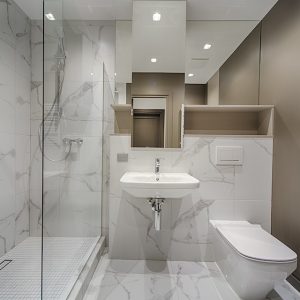Your home is your sanctuary, a place of comfort and security. Yet, even within the safety of your walls, unexpected events can occur. One such event is a plumbing emergency, particularly when it involves your toilet. In these moments, a reliable toilet shut-off valve can be the difference between a minor inconvenience and a major disaster. In this article, we’ll delve into why a trustworthy shut-off valve is a must-have in your home and how it can save you from potential headaches and costly repairs.
The Hidden Hero of Your Bathroom: Think of your toilet shut-off valve as a secret guardian, silently standing by until it’s called upon. Nestled near the base of your toilet or discreetly tucked behind the wall, this unassuming device allows you to control the water supply to your toilet. When a sudden plumbing emergency strikes, such as a leak, overflow, or even a burst pipe, the shut-off valve becomes your lifeline. Turning it off stops the water flow and minimizes damage, giving you time to address the issue.
Key Reasons for a Reliable Shut-Off Valve:
- Preventing Water Damage: A faulty shut-off valve can lead to significant water damage within your home. Water damage can ruin flooring, walls, and even structural components if left unchecked. A reliable valve helps you prevent such scenarios by giving you the ability to halt water flow promptly.
- Avoiding Costly Repairs: The costs associated with water damage repairs can quickly escalate. By using your shut-off valve effectively, you can prevent the need for costly repairs and replacements, saving you both time and money.
- Emergency Response: In a plumbing emergency, time is of the essence. A properly functioning shut-off valve allows you to respond quickly, limiting the extent of the damage and reducing stress levels.
- Facilitating Maintenance: Whether you’re performing routine toilet maintenance, replacing a broken part, or upgrading your toilet, a shut-off valve is your best friend. It makes these tasks much more manageable by allowing you to work without water flow disruptions.
Knowing How to Operate: Understanding how to operate your shut-off valve is paramount. Follow these steps to ensure you’re prepared:
- Locate the Valve: Identify the valve’s location, which is usually near the toilet’s base or on the wall behind it.
- Shutting Off the Water: If you have a compression valve (with a circular handle), turn it clockwise to close. For a quarter-turn valve (with a lever handle), turn it 90 degrees to stop water flow.
Maintaining Your Lifesaver: Regular maintenance of your shut-off valve keeps it ready for action when needed most:
- Routine Operation: Exercise the valve by turning it on and off a few times every six months to prevent it from becoming stuck.
- Visual Checks: Inspect the valve and its surroundings for signs of corrosion, rust, or leaks. Address any issues promptly.
- Replacement Consideration: If your valve is showing signs of wear, age, or malfunction, consider replacing it. Professional assistance can guide you in making this decision.



